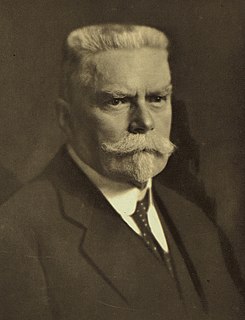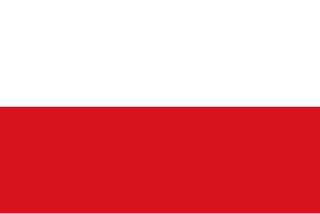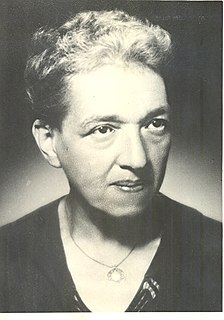
Bohemia is the westernmost and largest historical region of the Czech Republic. Bohemia can also refer to a wider area consisting of the historical Lands of the Bohemian Crown ruled by the Bohemian kings, including Moravia and Czech Silesia, in which case the smaller region is referred to as Bohemia proper as a means of distinction.

Prague is the capital and largest city in the Czech Republic, and the historical capital of Bohemia. On the Vltava river, Prague is home to about 1.3 million people. The city has a temperate oceanic climate, with relatively warm summers and chilly winters.

Charles University, also known as Charles University in Prague or historically as the University of Prague, is the oldest and largest university in the Czech Republic. It is one of the oldest universities in Europe in continuous operation. Today, the university consists of 17 faculties located in Prague, Hradec Králové, and Plzeň. Charles University belongs among the top three universities in Central and Eastern Europe. It is ranked around 200–300 in the world.

Charles IV, also known as Charles of Luxembourg, born Wenceslaus, was the first King of Bohemia to become Holy Roman Emperor. He was a member of the House of Luxembourg from his father's side and the Bohemian House of Přemyslid from his mother's side; he emphasized the latter due to his lifelong affinity for the Bohemian side of his inheritance, and also because his direct ancestors in the Přemyslid line included two saints.

Tomáš Garrigue Masaryk was a Czechoslovak politician, statesman, sociologist, and philosopher. Until 1914, he advocated restructuring the Austro-Hungarian Empire into a federal state. With the help of the Allied Powers, Masaryk gained independence for a Czechoslovak Republic as World War I ended in 1918. He co-founded Czechoslovakia together with Milan Rastislav Štefánik and Edvard Beneš and served as its first president.

The Battle of White Mountain was an important battle in the early stages of the Thirty Years' War. It led to the defeat of the Bohemian Revolt and ensured Habsburg control for the next three hundred years.

Bedřich (Friedrich) Hrozný was a Czech orientalist and linguist. He contributed to the decipherment of the ancient Hittite language, identified it as an Indo-European language and laid the groundwork for the development of Hittitology.

Jan Palach was a Czech student of history and political economics at Charles University in Prague. His self-immolation was a political protest against the end of the Prague Spring resulting from the 1968 invasion of Czechoslovakia by the Warsaw Pact armies.

The Habsburg monarchy, also known as the Danubian monarchy, or Habsburg Empire, was the collection of empires, kingdoms, duchies, counties and other polities that were ruled by the House of Habsburg, especially the dynasty's Austrian branch.

Karel Kramář was a Czech politician. He was a representative of the major Czech political party, the Young Czechs, in the Austrian Imperial Council from 1891 to 1915, becoming the party leader in 1897.

The Lands of the Bohemian Crown were a number of incorporated states in Central Europe during the medieval and early modern periods connected by feudal relations under the Bohemian kings. The crown lands primarily consisted of the Kingdom of Bohemia, an electorate of the Holy Roman Empire according to the Golden Bull of 1356, the Margraviate of Moravia, the Duchies of Silesia, and the two Lusatias, known as the Margraviate of Upper Lusatia and the Margraviate of Lower Lusatia, as well as other territories throughout its history. This agglomeration of states nominally under the rule of the Bohemian kings was historically referred to simply as Bohemia. They are now sometimes referred to in scholarship as the Czech lands, a direct translation of the Czech abbreviated name.

The Kingdom of Bohemia, sometimes in English literature referred to as the Czech Kingdom, was a medieval and early modern monarchy in Central Europe, the predecessor of the modern Czech Republic. It was an Imperial State in the Holy Roman Empire, and the Bohemian king was a prince-elector of the empire. The kings of Bohemia, besides the region of Bohemia proper itself, also ruled other lands belonging to the Bohemian Crown, which at various times included Moravia, Silesia, Lusatia, and parts of Saxony, Brandenburg, and Bavaria.

German Bohemians, later known as Sudeten Germans, were ethnic Germans living in the Czech lands of the Bohemian Crown, which later became an integral part of Czechoslovakia. Before 1945, over three million German Bohemians constituted about 23% of the population of the whole country and about 29.5% of the population of Bohemia and Moravia. Ethnic Germans migrated into the Kingdom of Bohemia, an electoral territory of the Holy Roman Empire, from the 11th century, mostly in the border regions of what was later called the "Sudetenland", which was named after the Sudeten Mountains.

The Czech National Revival was a cultural movement which took place in the Czech lands during the 18th and 19th centuries. The purpose of this movement was to revive the Czech language, culture and national identity. The most prominent figures of the revival movement were Josef Dobrovský and Josef Jungmann.

The history of the Jews in the Czech lands, which include the modern Czech Republic as well as Bohemia, Czech Silesia and Moravia, goes back many centuries. There is evidence that Jews have lived in Moravia and Bohemia since as early as the 10th century. As of 2005, there were approximately 4,000 Jews living in the Czech Republic.

The Faculty of Arts, Charles University, is one of the original four faculties of Charles University in Prague. When founded, it was named the Faculty of the Liberal Arts or the Artistic Faculty. The faculty provides lectures in the widest range of fields of the humanities in the Czech Republic, and is the only university faculty in Europe which provides studies in all the official languages of the European Union. The faculty has around 1,000 members of staff, over 9,000 students, and a flexible system of more than 700 possible double-subject degree combinations.
The following is a timeline of the history of the city of Prague, Czech Republic.

Julie Moschelesová, also known as Julie Moscheles, was a Jewish German-speaking Czechoslovak geographer. Moschelesová was brought up in London by her uncle, the English painter Felix Moscheles. While on a trip to North Africa with him, she met the Norwegian geologist Hans Henrik Reusch who invited her to work in Oslo, Norway. While there, her interest in geography was noticed by Alfred Grund of the German University of Prague who persuaded her to study there. Earning a Ph.D. in 1916, she later moved to the Czech University in Prague obtaining habilitation in anthropogeography in 1934. In 1939, she fled the Nazi occupation and moved to Australia, where she lectured at the University of Melbourne. Together with her companion Greta Hort she moved back to Prague after the war but had to wait for several years before she was able to teach at the Charles University. A heavy cigarette smoker, she died of cancer in 1956.

The Anglo-Czechoslovak Bank was a significant bank in interwar Czechoslovakia, created in 1921 by the Anglo-Austrian Bank. After several mergers and restructurings, it was eventually absorbed in 1948 by Živnostenská banka. By 1922, it was the fifth-largest Czechoslovak joint-stock bank, by either capital or total assets.
















